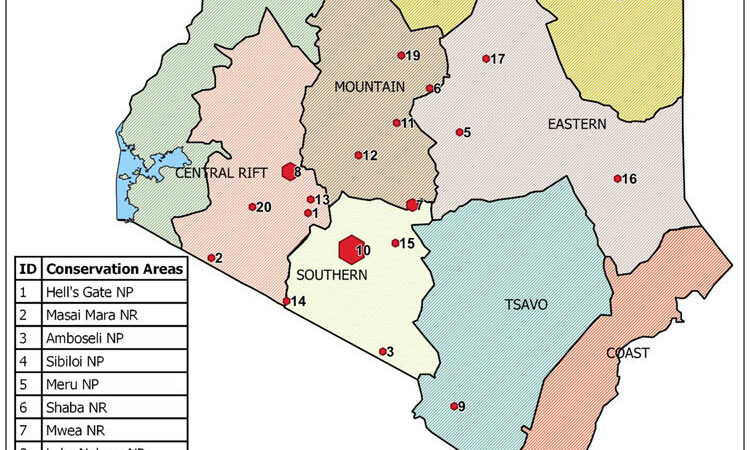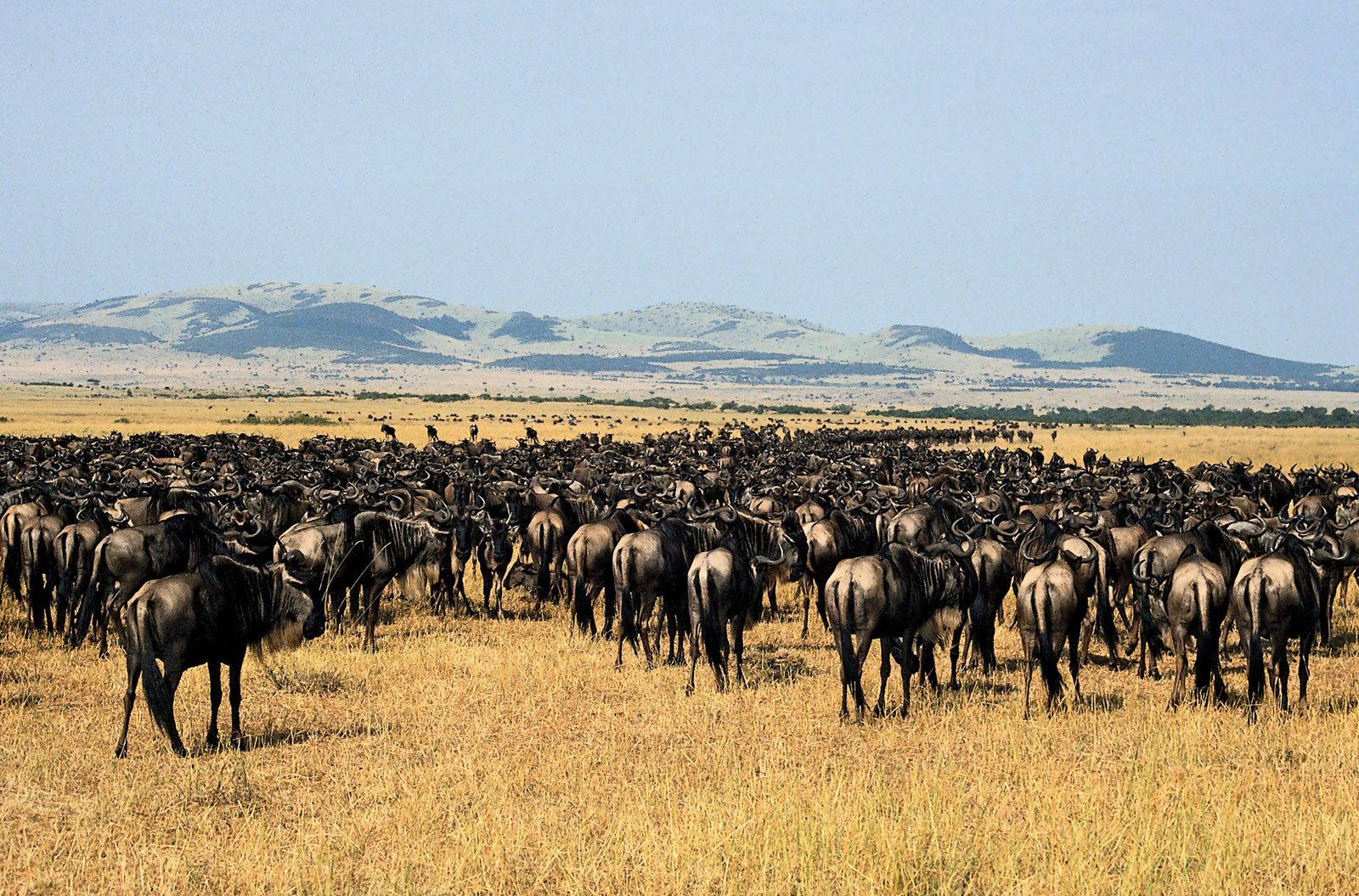Wildlife regions in Kenya : Kenya is known as the leading safari tour destination in Africa and ranks among the best places to go on safari in the world. Thousands of safari tourists visit Kenya each year to witness some of the wildlife events such as the Great Wildebeest Migration, the Big 5 and its abundant animals. Kenya offers all year round wildlife viewing experience because of its conducive temperate, vast open areas, and an abundance of wildlife in popular spots like the Masai Mara National Reserve and Amboseli National Park. This site is the ideal place if you’re organising your first safari in Kenya. This site is greatest place for planning tips which include Kenya safari guide, which covers everything from travel costs and the best sites to see wildlife to when to see the wildebeest migration and where to stay.

Kenya is an East African nation that is not very large. Nairobi is the capital and the main transport hub, situated roughly in the middle. Travellers on safari arrive at the international Jomo Kenyatta airport, then link to domestic Wilson airport, which is located next door, to reach their safari destinations. These are the principal regions to the north, south, east, and west of the capital, with Nairobi serving as the focal point:
What to find in Northern Kenya
The terrain gets drier and hillier as you move further north because this region of Kenya doesn’t receive as much rainfall as the southwest does. Nevertheless, there are still excellent places to go on safari in this area, including as Laikipia, Lewa Wildlife Conservancy, and Samburu National Park. More dry environments are ideal for animals such as Grevy’s zebra, Somali ostrich, and gerenuk. The greatest area in Kenya to regularly and reliably witness rhinos is Lewa. You might be fortunate enough to glimpse Mounts Kenya and Meru on a clear day.
What to find in Southern Kenya
The greatest location to witness snow-capped Mount Kilimanjaro, the highest peak in Africa and the tallest free-standing mountain in the world, is along Kenya’s longest border with Tanzania. Though Amboseli National Park in Kenya is so close to Tanzanian territory that it offers amazing views, Mount Kilimanjaro is technically in Tanzania but perfectly viewed and photographed from Amboseli offering a great backdrop with its stunning combination of open grassland, wetlands, woods, and hills, making it suitable for a broad diversity of species, from bat-eared foxes to elephants. This region of Kenya is wetter and has more varied terrain. The Tsavo East and West National Parks and the Chyulu Hills are close by. The best beaches in Kenya are located well down the southeast coast. Visit the nearby Galu and Diani for world-class beach hotels and sea sports, including as kitesurfing. Head to Funzi Island for snorkelling and diving.
Central kenya
All Kenya safari itineraries usually begin here because Nairobi serves as the nation’s logistical centre. There are many conservation areas in the vicinity of Nairobi, the most well-known of which are the Aberdare Mountains, Lakes Nakuru National Park and Naivasha, and Nairobi National Park. During the rainy season, the area is verdant and lush, and the lakes serve as a haven for a variety of fauna and birds.
Western Kenya attractions
The Masai Mara National Reserve, which is the epicentre of the annual Wildebeest Migration and offers some of Africa’s best year-round game watching, is undoubtedly the most well-known kenya safari tour attraction in western Kenya. The vast herds of wildebeest and zebra, which are present in their hundreds of thousands from August to November, draw continual attention from Africa’s top predators, resulting in a large number of visitors during peak season, which is about June to October. The wide vast unending view of acacia dotted savannah of the Masai Mara offers excellent grazing, which is the main factor drawing the wildebeest Migration. There aren’t many thickets, forests, or steep peaks; instead, the expansive terrain is reminiscent of a kenya safari, with green grass that changes to golden hues with the seasons. Some of the notable animals Include reticulated and Masai giraffes, topi, and Thomson’s gazelles and the plains are home to a variety of other wildlife species , including the sporadic flat-topped acacia trees.

How to get around in Kenya
Jomo Kenyatta International Airport (JKIA) in Nairobi is the safari in Kenya destination and departure point for international flights. It functions as Kenya’s principal aviation centre as well as the gateway to East Africa. Fly-in safaris to the Masai Mara, Amboseli, Samburu, and other destinations depart at Wilson Airport, which is approximately 15 km (10 km) from JKIA. Prior to your domestic and international flights, make sure you have adequate time to get between the two airports. It can take up to 90 minutes for the road transfer on a good day. Charter flights are a great way to travel throughout Kenya, allowing you to spend more time on safari and avoid long car transfers. Road transfers between lodges and bush airstrips are done by 4X4 safari cars.
Tipping culture in Kenya
Though not necessary, tipping are frequently given in Kenya to recognise and thank service providers for their outstanding job. Cash tips are accepted and should be placed in the staff tip box, which is a feature in most safari lodges, or presented to the relevant member of staff, the lodge or camp management, or both. The group of people that are tipped in kenya are; Tour guides, wildlife rangers and trackers, hotel, train, and airport porters, taxi or shuttle drivers, chambermaids, and golf caddies.
It is normal to tip between 10% and 15% of the entire amount at restaurants and pubs; however, bigger groups may be charged a service charge. Think about leaving a $5 gratuity for each spouse in your group during transfers. There is a tipping policy for game lodge employees: $15 per couple per day for staff, and $10–$15 for trackers and rangers. Check out our comprehensive tipping guide for more details on how to tip on safari.
Conservation efforts
When you plan a vacation to Kenya, there is so much to see and do that it might be tough to pare down your schedule to just a select few. Seeing the Great Migration or having ethical interactions with giraffes and elephants in Nairobi—whatever the ideal Kenya safari for you may involve—your journey can contribute to the preservation of the natural world and its fauna. We provide a selection of safari itineraries called Trips With A Purpose that include visits or deep, hands-on experiences in support of regional conservation initiatives. These safari itineraries will help you leave Kenya in better shape than when you arrived:


